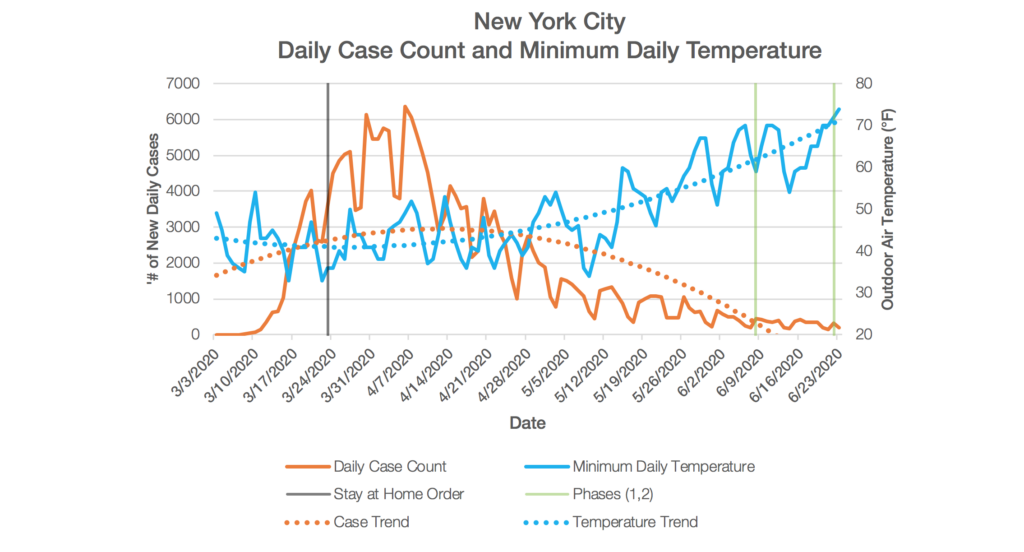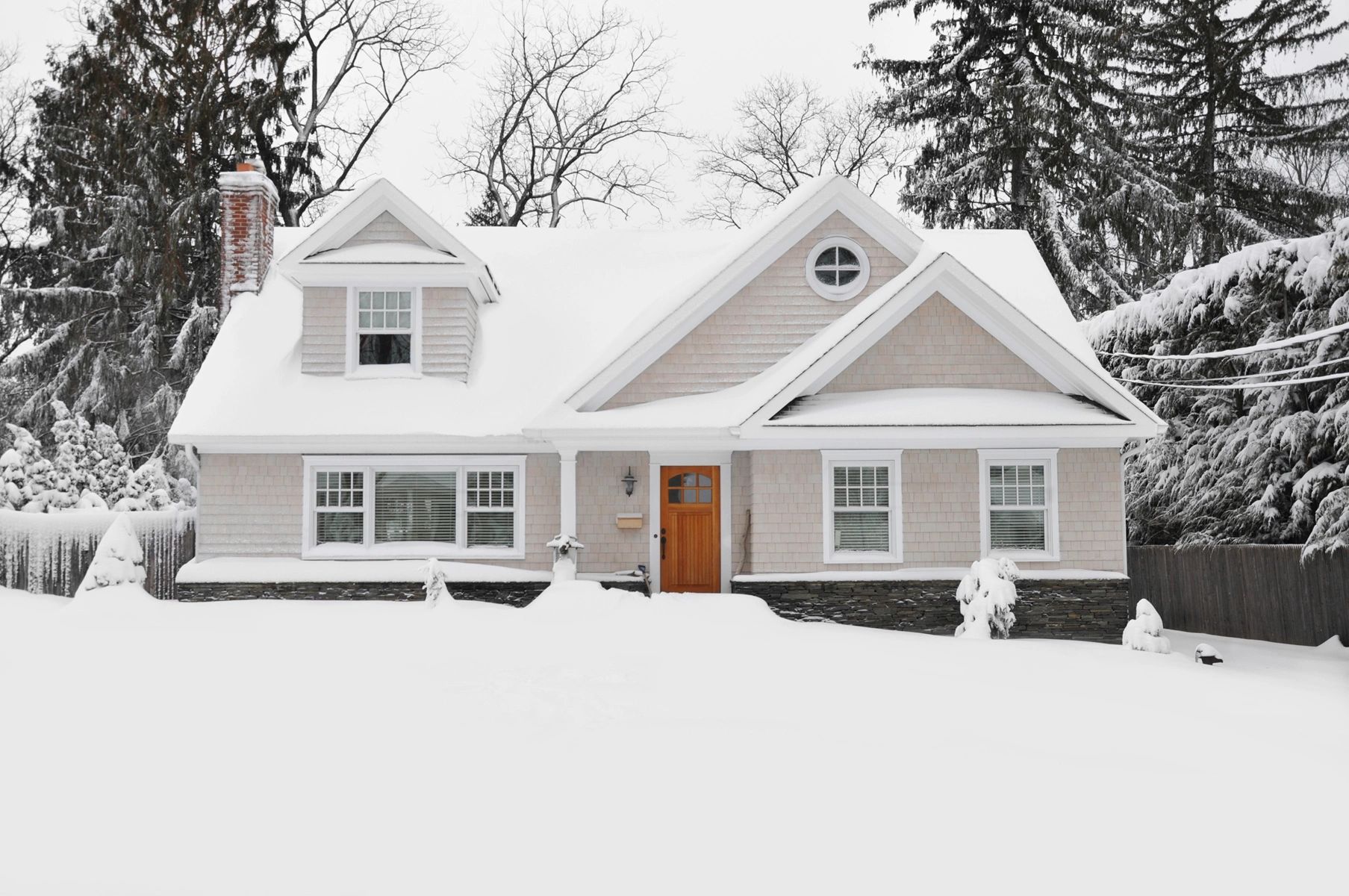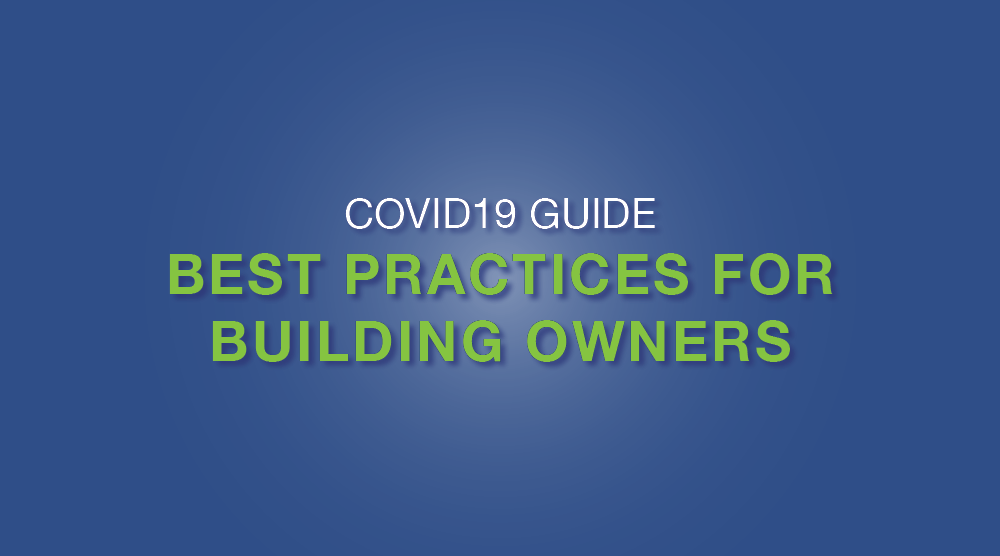White Paper: U.S. Must Make Significant Improvements To Indoor Air Quality Practices. Without Change, Northeast Infections Will Soar Again This Winter In Low Relative Humidity, Low Air Circulation Environments. Worse, this will continue to attack our most at-risk population.
– Building Tracing, Air Quality Monitoring Are Essential to Stop the Spread
TROY, NY (08/21/2020) – Air quality engineers warn that COVID-19 cases may spike again in the Northeast this winter due to modern HVAC (heating ventilation and cooling) systems.
“COVID-19 is a respiratory illness and we need to get serious about indoor air quality to stop its spread,” said Jeremy McDonald, 53, a professional engineer with New York-based firm Guth DeConzo Consulting Engineers. “The challenge with getting people to pay more attention to indoor air quality is that you can’t see the problem — it’s invisible, so I think people have a hard time understanding it. And that’s dangerous, especially in a pandemic fueled by airborne droplets.”
Unless we take incredible steps toward herd immunity or a mass vaccination, it is inevitable that the virus will propagate again once the heating season starts in the Northeast, McDonald says, because we will be in the same indoor air conditions that existed last February through April when the virus ravaged New York and New Jersey.
Right now, wearing masks, maintaining social distance and disinfecting surfaces are the most prominent tools in the fight against coronavirus. But McDonald believes it will be crucial this winter that our virus-halting strategies focus on indoor relative humidity and quality air circulation.
“What the South is experiencing right now with soaring case numbers, the Northeast will experience this winter,” McDonald said. “As soon as the windows are buttoned up and the heating systems turn back on, we’ll be right back in trouble.”
When we turn on our heating systems, McDonald explains, relative humidity within our building drops significantly, typically below 10 percent. Like most viruses, the SARS-CoV-2 coronavirus that causes COVID-19 needs very low or high relative humidity to propagate.
The problem compounds in winter because we also limit the amount of fresh air entering buildings by shutting our windows. This reduces our outdoor dilution air, which allows the virus to propagate in a stale air environment. Lastly, we spend more time in these indoor conditions during the winter because it’s cold outside.
In high occupancy buildings like nursing homes, prisons and multi-family complexes, the virus will explode under conditions that are optimal for virus transmission.
Seasonal weather factors into the COVID-19 crisis when it forces people inside, but it is the indoor climate that effects the virus, McDonald says. In the South, people spend their summers inside to avoid the oppressive heat, whereas Northerners keep indoors to avoid the winter cold. Regardless of region or season, most indoor HVAC systems are creating conditions in which COVID-19 spreads, especially when there are more people sharing the space.
“Wearing masks and social distancing are immediate steps you can take during a health crisis, and they have an immediate result, but they are not long-term solutions,” McDonald said. “We have to recognize the major role that indoor air environments play in this crisis and do everything we can to make our indoor spaces as safe as possible, because that is where the vast majority of cases propagate.”


Charts from “Mitigating COVID-19: A Better Path Forward” show daily temperature trends (which is indicative of when buildings are in heating or cooling mode) compared to the documented number of COVID-19 cases for several regions of the country.
Quarantine Fatigue and Making Good Decisions
McDonald notes that masks and social distancing only work as long as people are willing to take those steps.
“A big fear of mine is quarantine fatigue, when people say ‘I’m done with masks, I’m done with social distancing. I can’t do this any more,” McDonald said. “If we have a better understanding of humidity and air flow, then people can make better decisions about when It’s OK to relax a little on mask wearing and social distancing, and when to be more vigilant — when it’s safer and when it’s riskier.”
Strategies To Mitigate Covid-19
In a white paper published online earlier this month, titled “Mitigating COVID-19: A Better Path Forward; Addressing Indoor Air Quality Issues to Reduce the Impact of the Pandemic,” McDonald calls attention to widespread HVAC problems and introduces strategies to address them.
Air Circulation Control
Low air circulation is a problem indoors in many modern buildings. Like a stagnant pond, a room with no airflow will allow pathogens and toxins to build up, ultimately creating a toxic environment for its inhabitants. Good air circulation, on the other hand, will whisk away toxins from a room like a running stream of water.
“Opening windows is the simplest way to improve air circulation, but it’s not always an option depending on the weather outside or the design of the building, and obviously comfort and heating costs have to be factored in,” McDonald said. “You can’t even open a window in most modern buildings, because they were designed to be tight for energy conservation. Although, that’s not meant as an argument for loose building envelopes.”
Most office buildings are ventilated to have up to two air changes per hour, so that fresh air from outside purges the indoor air every 30 minutes, maximum. The more fresh air purges per hour the better from a infection control perspective, since this will reduce the concentration of the virus.
The problem, McDonald notes, is that a lot of buildings suffer from a lack of routine maintenance or aged equipment and don’t achieve the recommended air exchanges. This can lead to little to no air dilution, which may allow the virus to propagate.
“Opening windows is the simplest way to improve air circulation, but it’s not always an option depending on the weather outside or the design of the building, and obviously comfort and heating costs have to be factored in,” McDonald said. “You can’t even open a window in most modern buildings, because they were designed to be tight for energy conservation. Although, that’s not meant as an argument for loose building envelopes.”
McDonald is concerned that many of our buildings are not even maintaining the minimal airflows which were included in the design of the building by building code. Without proper management of indoor air quality (IAQ) the actual air flow to a building may be far less than it’s designed to have, which allows this nasty virus to increase in concentration.
“I often wonder when I read about large COVID-19 outbreaks in particular buildings or restaurants, is anyone looking at the amount of fresh air truly provided to the space. Without very good maintenance, you maybe getting little to no fresh air” McDonald said. “It’s like a cesspool.”
Outside, on the other hand, there may be 10,000 air changes or more per hour on a mildy breezy day. McDonald believes this is a critical reason why the preponderance of COVID-19 cases have been indoors, and further believes that this is the type of information the public needs to make informed decisions.
The Role Of Relative Humidity
Scientists long ago established that viruses, bacteria and other toxins propagate either with low or high relative humidity. Viruses typically struggle to propagate when relative humidity is moderate, between 40 percent and 60 percent relative humidity.
As relative humidity is lowered in buildings, people’s noses, throat, and lungs become drier. In addition to being an irritant, this drying effect of our bronchial system — which McDonald calls “the human HVAC system” — results in less resistance to viruses and bacteria.
As air is warmed, its ability to retain water is increased — lowering the relative humidity of the air. This is why viruses are their most deadly over the long winter months in the Northeast, as we spend more time in the warm and dry confines of our homes and buildings.
“The ideal humidity for human health is between 40 percent and 60 percent,” McDonald said. “For an office building, it’s really hard to get to 40 percent humidity on a bone dry, 5 degree winter day. But even getting to 30 percent humidity would help a lot in reducing the intensity of the virus.”
Empowering Consumers
In the future, as awareness of these issues increases, McDonald thinks the public will demand better indoor air quality. In particular, he sees a growing need for better information and education, so that people know what the relative humidity and CO2 levels are in a room before they spend an extended amount of time there. We may even see a rise in personal tools for measuring indoor air quality, he says.
“Since we can’t ‘see’ air, it is really hard to know if you are in a good IAQ environment or not,” McDonald said. “If people have a way of telling that an indoor space has good airflow and moderate relative humidity, then they would probably be more comfortable spending time in that place.”
Increasingly, businesses are investing money in upgrading their IAQ, which McDonald sees as a positive step. “As businesses demonstrate improved IAQ, my hunch is they will want to market that and inform their clients of their efforts,” he said. “As awareness of air quality increases, the demand for good IAQ will increase with it.”
Building Tracing
As the COVID-19 crisis unfolds, data shows that the virus has been most contagious in dense urban areas, with a particular concentration in high density spaces such as nursing homes, multifamily buildings, prisons, bars and restaurants. However, at least anecdotally, there are some buildings which had a large number of cases, and others who had little to none. McDonald speculates that in addition to communal spread, the IAQ of particular buildings may be a large contributing factor. If true, this presents an opportunity to reduce spread in the future by evaluating and reviewing the HVAC of individual buildings. In addition to contact tracing, McDonald wants to see a “building tracing” program, to identify specific buildings that suffer from low IAQ. “Everyone wants to see this problem solved. If IAQ is a large part of the problem, then we need to know where the problem is before we can fix it.”
Public Relations More Persuasive Than Codes
All communities have building codes that address air quality and HVAC systems, McDonald notes, but the issue needs more public awareness and education before we can expect enforcement.
“It’s kind of like the 1970s Clean Water Act when industries were allowed to dump the most toxic chemicals into the water,” McDonald said of today’s indoor air quality problems. “It’s not like virus-laden air is sooty and black. But that’s the level of PR campaign we need to get the greater public, especially decision makers to act on addressing this problem.”
Just as hard-to-see fleas were later discovered to have spread the bubonic plague of medieval times, McDonald thinks modern HVAC systems that were “hiding in plain sight” will be recognized as the “super spreader” of the COVID-19 plague.
“Air conditioning, HVAC systems, may be to COVID-19 crisis what fleas were to the bubonic plague,” McDonald said.
Read the White Paper, Follow the Blog
To read the white paper “Mitigating COVID-19: A Better Path Forward; Addressing Indoor Air Quality Issues to Reduce the Impact of the Pandemic,” by Jeremy McDonald, PE, visit:






